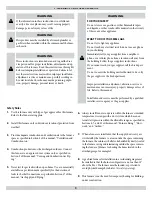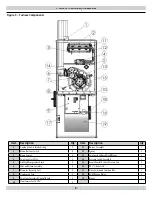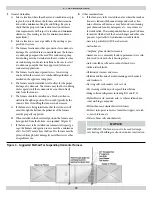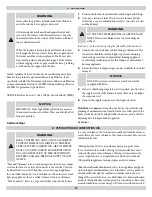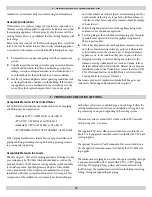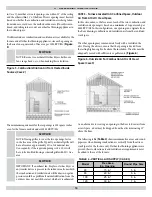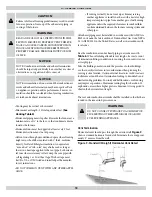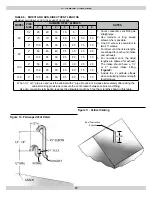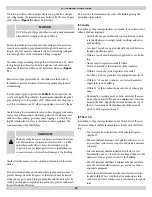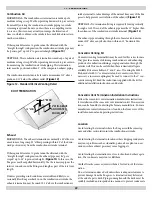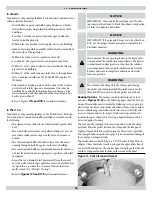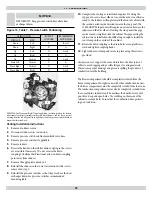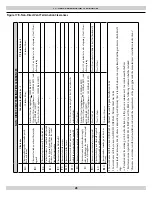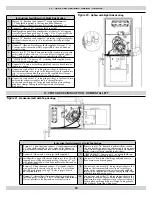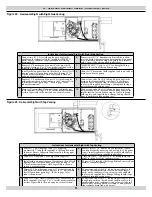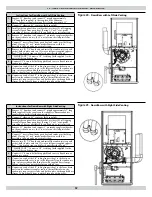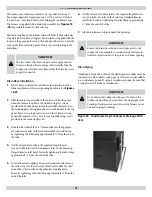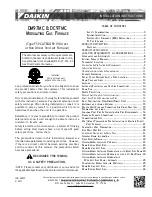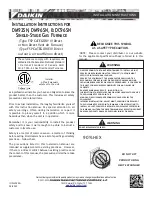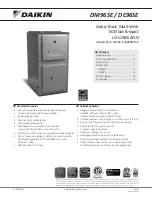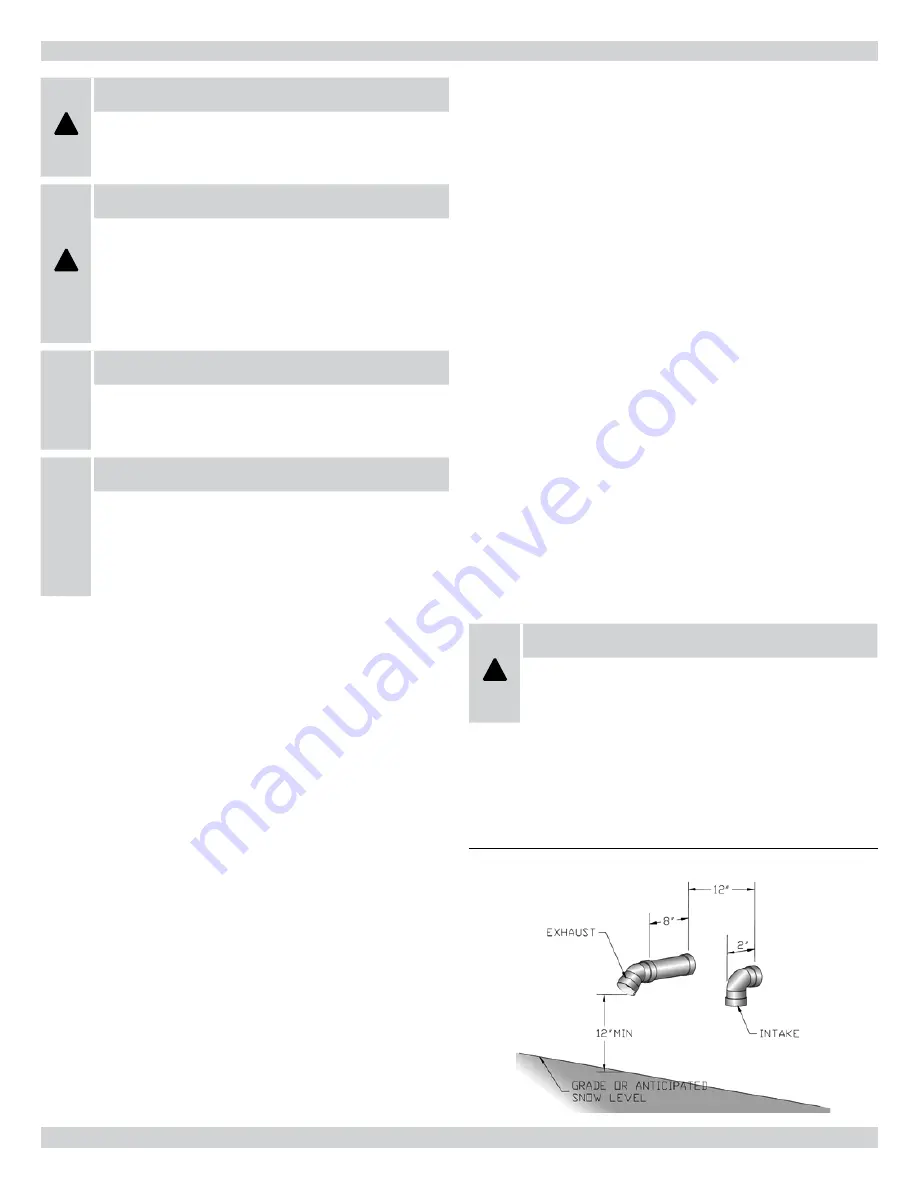
!
CAUTION
Failure to follow all venting guidelines may result in erratic
furnace operation, freeze-up of the exhaust air piping, or
sooting of the furnace.
!
WARNING
READ AND FOLLOW ALL INSTRUCTIONS IN THIS
SECTION. FAILURE TO PROPERLY VENT THIS FUR-
NACE CAN CAUSE CARBON MONOXIDE POISON-
ING OR AN EXPLOSION OR FIRE RESULTING IN
PROPERTY DAMAGE, PERSONAL INJURY OR LOSS
OF LIFE.
NOTICE
NOTE: Combustion air intake and exhaust termination
should be inspected periodically to ensure they are clear of
obstructions. i.e. vegetation, debris, snow, etc.
NOTICE
NOTE: Accumulation of snow around the combustion air
intake and exhaust termination may have negative eff ects
on appliance operation and/or performance. Snow accu-
mulation should be considered when locating combustion
air intake and exhaust terminations.
• Venting may be vertical or horizontal.
• Minimum vent length - 25 total equivalent feet.
(See
Venting Table6)
• Horizontal piping must slope back towards the furnace at a
minimum rate of ¼” to the foot, so that condensate drains
towards the furnace.
• Horizontal runs must be supported at least every 3 feet.
Horizontal sections must not dip or sag.
• All vent runs through unconditioned space where freezing
might occur should be insulated with 1” thick, medium
density, foil-faced Fiberglass insulation. An equivalent
“arm-a-fl ex” or “rub-a-tex” may also be used as long as
there is no heat tape applied to the vent pipe. For horizon-
tal runs where water may collect, wrap the vent pipe with
self regulating 3 or 5 watt heat tape. Th
e heat tape must
be CSA, UL, or ULC listed and installed per the manufac-
turer’s instructions.
• DO NOT COMMON VENT WITH ANY OTHER APPLI-
ANCE.
• If venting vertically, do not vent up a chimney serving
another appliance or install in a chase with a metal or high
temperature plastic pipe from another gas or fuel burning
appliance unless the required clearances to combustibles
can be maintained between the furnace venting system and
other pipes.
All exhaust piping must be installed in accordance with CAN/CGA-
B149.in Canada; the latest edition of National Fuel Gas Code, NFPA
54 / ANSI Z223.1 in the United States, as well as in accordance with
local codes.
Size the combustion air and exhaust piping in accordance with
Table 6
. When calculating allowable vent lengths, be sure to count
all termination fi ttings in addition to counting the concentric vent as
a straight pipe.
Take the building orientation and the presence of other buildings
or other nearby structures into consideration when planning the
venting system location. Certain external structures could create air
turbulence around the vent termination leading to downdraft s and
similar venting problems. In windy and hill locations, roof venting
may improve operations. Maximum venting length is based on 30
mph winds, areas where higher gusts are dominant it is suggested to
shorten the horizontal vent length.
Th
e vent and combustion air intake shall be installed so that both are
located in the same wind pressure zone.
!
WARNING
DO NOT CONNECT FURNACE TO A CHIMNEY OR
FLUE SERVING OTHER APPLIANCES OR A SOLID
FUEL BURNING APPLIANCE.
Vent Termination
Horizontal vents should pass through the exterior wall.
Figure 9
shows a standard horizontal vent detail. Terminate the vent approxi-
mately 8” or more from the wall.
12 - VENTING GUIDELINES
Figure 9 - Standard (Straight) Horizontal Vent Detail
18

